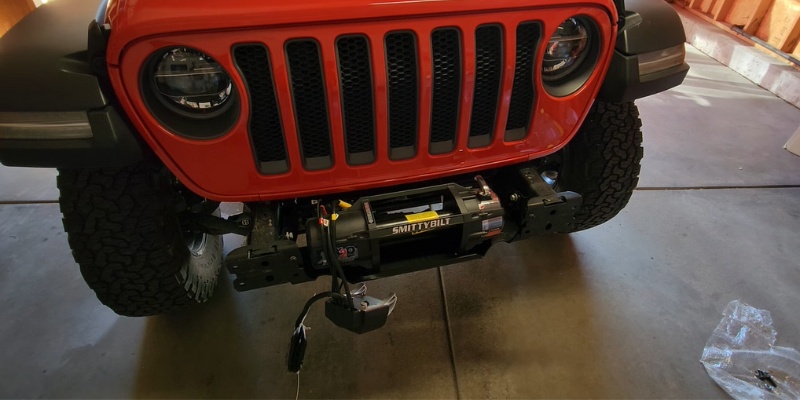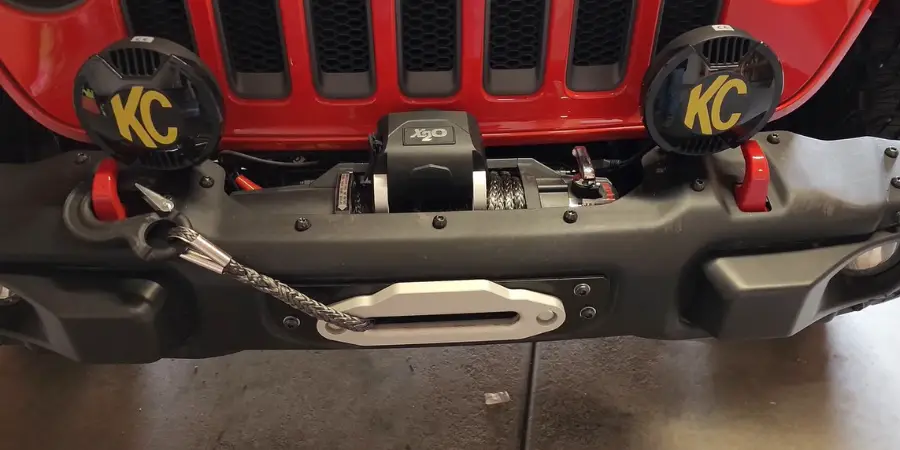How to Install a winch on a Jeep JK
Off-roading is one of the most exciting and rewarding activities you can do with your Jeep.
Taking that vehicle, splashing through muddy puddles miles away from anywhere, cruising a dirt trail around the thick wilderness, gliding over sand with the ocean a few feet away, or inching along carefully across rock obstacles is the dream of an off-roader.
These pursuits all take you and your Jeep away from the crowds and pavement to some of the more remote destinations on Earth.
So it only makes sense to know how to install Winch Jeep JK before you zoom off to your off-road adventures.
You never know when something could happen on the trail, either to you or someone in your group, so you must be prepared at all times.
Tips for Winch Installation on Jeep JK
When it comes to winch installation, the most important thing is to choose the right winch.
When it concerns winches, you need to pay attention to those that have a pulling capacity of at least one and a half times the weight of the vehicle pulled.
You can opt for more, but you should never choose a lesser winch-pulling power.
The Jeep Wrangler is designed to drive in areas away from tow trucks.
Luckily, you have the option of an inexpensive solution specifically to get you out of trouble; winch makes it OK to somehow get in trouble, knowing you can always get out of it.
The winch has a cable that extends, which helps you in various ways.
You can use it to pull another fellow off-roader out of ditches, or you can use it to follow off-roaders pull you out of trenches, or you can even wrap it around a tree to gain more traction to pull yourself out of ditches.
It may look like the front bumper supports it, make no mistake; it has no relationship to the front bumper.
This winch is attached to a plate connected to your frame and sits on top of your bumper without applying weight. The process is easy to do and requires removing the front bumper.
Materials Needed
- T55 socket
- Ratchet
- Socket set
- Flat-headed screwdriver

How Do You Install A Winch On Your Jeep JK?
Is a different bumper setup required than the factory version? Are there any other components required? And how does it connect?
Well, first off, yes, you can mount a winch on most factory plastic bumpers. Several manufacturers offer slick winch mounting plates that coexist with your factory bumper.
Usually, these mounting plates place your new winch above the factory bumper.
Method 1:
This installation usually requires the removal of your factory bumper, and the winch plate will then bolt to your Jeep’s frame and accept the winch. Once the factory bumper is reinstalled, you can get on the trail.
Step 1 – Remove the front bumper
Remove the plastic shield from under the car. Remove the plastic chips by turning them counterclockwise with your flathead screwdriver.
Slide under your car’s front, removing all the bolts attaching the front bumper to the frame. There should be four total holding them together.
Ask a friend to have the bumper, so it doesn’t fall when you remove the bolts.
Step 2 – Install the winch plate
The winch plate comes specifically for your Jeep Wrangler. It is designed to bolt on your frame, as the holes are pre-drilled in the right places. Use the bolts included with your plate and bolt them onto the frame.
Follow the instruction on your specific winch; you will most likely use the same holes the bumper uses, which doesn’t mean the bumper will support it.
Step 3 – Install the winch
The winch bolts right on the plate. All the holes should align, so use the included bolts, washers and nuts. Then tighten them together before you install the bumper back on.
Step 4 – Install the bumper
Install the bumper in the same manner that you removed it. If you used the same holes to install the plate, align the bumper and tighten it together.
If you mounted it differently, replace the bumper the same way you removed it.
A friend can help you hold the bumper while you tighten the four bolts.
By mounting it this way, you don’t have to worry about adding the extra weight of a heavy aftermarket bumper, plus it is easier to remove the winch if you want it off for any period.
This combination is usually a decent set-up for winches with around 8,000-pound pulling power; for those who may only go off-road a few times a year.
Method 2:
Another way to do this is to install a more substantial aftermarket front bumper.
These heavier-duty bumpers offer considerably more options and advantages than a factory plastic bumper installation, primarily if your plans involve hitting the trail as much as you can during the year.
Aftermarket front winch bumpers utilize a fully-welded steel construction, making them stronger and more durable. They also give the winch a lower pulling point, providing better protection from impacts and allowing for better airflow through the grille area.
Plus, these rugged-looking bumpers have an appearance that is an excellent head-turner when driving around town.
They also come with an integrated mounting plate, so the winch installation does not take much work.
Many even come with a protective grille guard that provides additional protection against trail obstacles like brush and branches that could impact the winch on a factory bumper set-up.
These aftermarket winch bumpers usually offer some personalization and can be found in stubby, mid-width and full sizes to accommodate nearly everyone’s sense of style.
Modular series winch bumpers provide customization options that allow you to add more side and top protection to protect the winch.
Final thoughts
Overall, installing a winch on your Jeep is a reasonably simple project.
Once you’ve determined what bumper you have, what type of mount or replacement bumper you require, chosen the best winch for your needs, and received all of the parts, you should be able to self-recover or assist in the recovery of your friends and fellow trail riders in a matter of hours.

